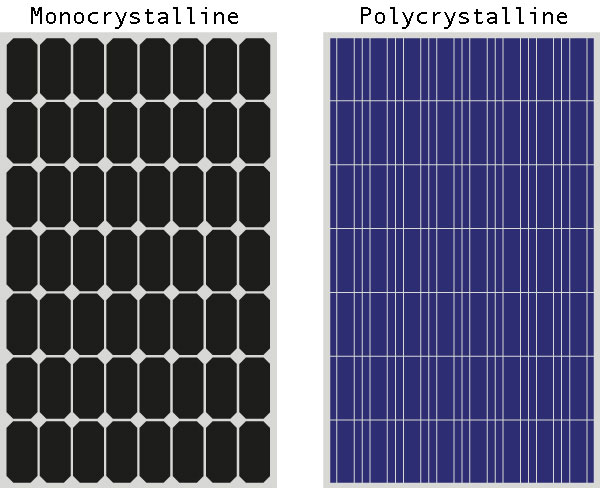If you are in the process of selecting your solar panel you will have to answer this question: monocrystalline or polycrystalline? To do so, keep reading our post and we will help you to answer it according to the type of camper user you are or will be. So, first of all, stop for a moment and think about what your general needs are…. now read on and discover the characteristics of each one so that you can make the best decision.
What are the differences between a monocrystalline and a polycrystalline solar panel?
To decide which type of solar panel is more suitable for your van you will need to know how they differ. To make it a little easier we have prepared the following table in which we show a small comparison of their most relevant characteristics.
| Monocrystalline | Polycrystalline | |
|---|---|---|
| Composition | Single-crystal silicon cells | Cells with multiple crystallized silicon particles |
| Cell shape | Circular or octagonal | Rectangular |
| Cell color | Dark blue or black | Navy blue with different shades |
| Manufacturing cost | Slower manufacturing with high energy cost | Faster and cheaper manufacturing |
| Efficiency | Between 18 and 20% | Between 16 and 18% |
| Power to size ratio | Same power with smaller size | Less power with the same size |
| Climate type | Cooler climates ⛅ | Warmer climates ☀️ |
| Heat resistance | Withstands overheating less well | Less affected by overheating |
| Monocrystalline | |
|---|---|
| Composition | Single crystal silicon cells |
| Cell shape | Circular or octagonal |
| Cell color | Black |
| Manufacturing cost | Slower manufacturing with high energy cost |
| Efficiency | Slightly more efficient |
| Power to size ratio | Same power with smaller size |
| Climate type | Colder climates ⛅ |
| Heat resistance | Withstands overheating less well |
| Polycrystalline | |
|---|---|
| Composition | Cells with multiple crystallized silicon particles |
| Cell shape | Rectangular |
| Cell color | Navy blue |
| Manufacturing cost | Faster and more economical to manufacture |
| Efficiency | Slightly less efficient |
| Power to size ratio | Less power for the same size |
| Climate type | Warmer climates ☀️ |
| Heat resistance | Less affected by overheating |
Since a picture is worth a thousand words, here’s a picture of what each would look like so you can tell them apart:

Which is better for a camper: monocrystalline or polycrystalline?
Before deciding which panel to install on our van, we did a lot of research and asked many camper users. The vast majority install monocrystalline panels. The main reason? They are more efficient and powerful with a smaller size. This was the reason why we chose a monocrystalline panel for our camper.
If you still haven’t decided which type of solar panel is best for you, here is a video that will help you to solve your doubts.
